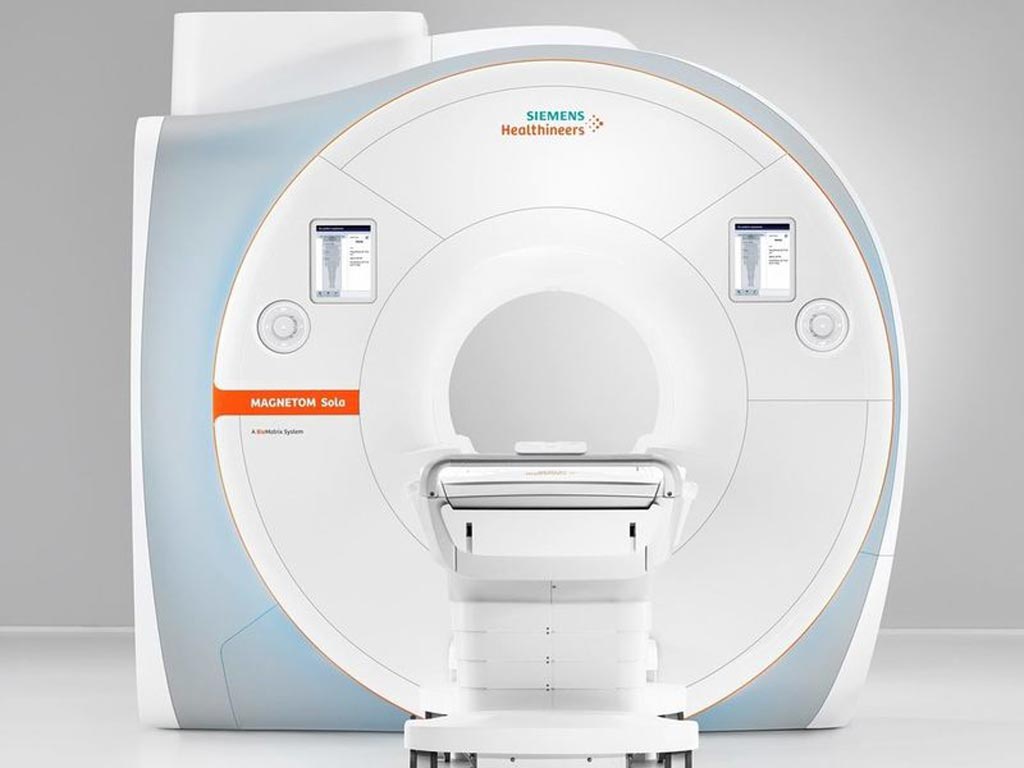BioMatrix Technology Reduces Variations in Patient Imaging
By MedImaging International staff writers
Posted on 23 Oct 2018
Novel magnetic resonance imaging (MRI) technology addresses patient anatomical and physiological differences, as well as differences in how users set up and conduct scans.Posted on 23 Oct 2018
The Siemens Healthineers (Erlangen, Germany) Magnetom Sola 1.5 Tesla MRI scanner is intended to help healthcare providers perform a full range of routine and complex MRI exams, while accelerating workflow and delivering consistent results across all patient types. An open, 70-cm bore allows larger body regions to be covered in one step with a full 50x50x50 cm field of view. Ultra-lightweight, anatomy-adaptive coils improve patient comfort while delivering high signal-to-noise ratio with up to 204 radiofrequency (RF) channels.

Image: The Magnetom Sola 1.5 Tesla MRI scanner (Photo courtesy of Siemens Healthineers).
With the aid of the BioMatrix Sensors, setup time and exam strategy have been improved. For example, respiratory sensors in the patient table remove the need for respiratory-triggered sequences, and a kinetic sensor--based on an in-bore camera system--enables visual monitoring of the patient’s face. The BioMatrix interfaces utilize artificial intelligence (AI) and body models to speed patient positioning and to deliver consistent, reproducible results. BioMatrix tuners improve the quality and reproducibility of head, neck, and spine imaging, using distortion-mitigating software and hardware.
New software enables faster scanning times, with multi-slice turbo spin echo (TSE) sequences reducing routine musculoskeletal scan times by up to 46%. When combined with Dot workflow engines and Tim 4G technology, the software accelerates scanning from positioning to post-processing with continual quality control of image data. Compressed sensing not only makes cardiac and dynamic liver exams faster, but also enables imaging of patients who cannot reliably hold their breath. The overall result is increased productivity and consistency across patients and exams.
“With the Magnetom Sola, we provide the 1.5T market with the latest MRI advancements designed to overcome the challenges of imaging diverse patient populations,” said Jane Kilkenney, vice-president of MRI at Siemens Healthineers North America. “By delivering unmatched levels of automation and personalization that address patient and user variability, we enable customers to achieve high-quality imaging – consistently and efficiently – across all patients and procedures.”
A cardiovascular edition of the Magnetom Sola, which includes high-performance hardware and software such as Compressed Sensing Cardiac Cine, MyoMaps, and the Cardiac Dot engine, is also available.














